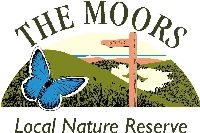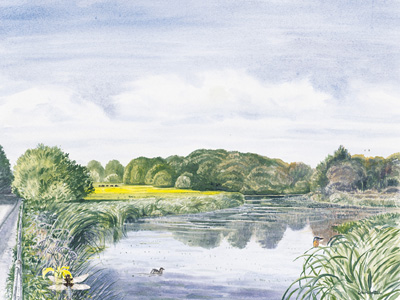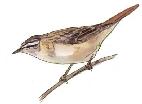Millstream walk
|
 A
walk across The Moors at any time of year can be very rewarding with a wide
variety of wildlife to see and hear. Footpaths cross the reserve from the
roadside by Waltham Chase Mill and from the edge of Bishop’s Waltham, a
network of paths can be followed across The Moors as far as Waltham Chase
& Swanmore. A
walk across The Moors at any time of year can be very rewarding with a wide
variety of wildlife to see and hear. Footpaths cross the reserve from the
roadside by Waltham Chase Mill and from the edge of Bishop’s Waltham, a
network of paths can be followed across The Moors as far as Waltham Chase
& Swanmore.
|
|
|
If you start the walk at the mill and look in
the stream you should see Trout (Salmo trutta) swimming below the
mill. Grey Wagtails (Motacilla cinerea) breed around the mill and
can often be seen sitting on the bridges or on the mill roof, from where
the male often sings. |
 |
| A walk across the road to view the millpond can
often produce sightings of typical waterside birds. You might see Kingfisher
(Alcedo atthis), Little Grebe (Tachybaptus ruficollis), Mallard
(Anas platyrhynchos), Coot (Fulica atra) and Moorhen (Gallinula
chloropus) and, if you are lucky, a Grey Heron (Ardea cinerea)
Sedge Warbler (Acrocephalus schoenobaenus) or Reed Bunting (Emberiza
schoeniculs) may be heard singing early in the morning. The picture
of the millpond is by local artist Dan Powell. |
 A
walk across The Moors at any time of year can be very rewarding with a wide
variety of wildlife to see and hear. Footpaths cross the reserve from the
roadside by Waltham Chase Mill and from the edge of Bishop’s Waltham, a
network of paths can be followed across The Moors as far as Waltham Chase
& Swanmore.
A
walk across The Moors at any time of year can be very rewarding with a wide
variety of wildlife to see and hear. Footpaths cross the reserve from the
roadside by Waltham Chase Mill and from the edge of Bishop’s Waltham, a
network of paths can be followed across The Moors as far as Waltham Chase
& Swanmore.



